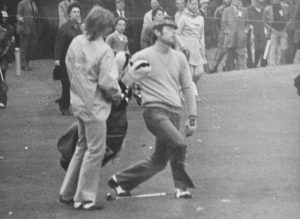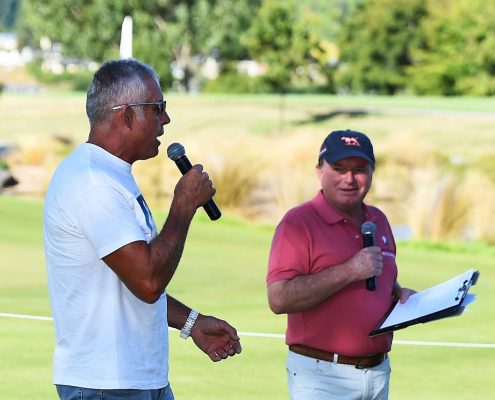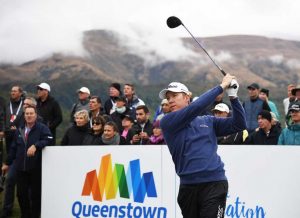The Masters captures the attention of not just the golfing world but the sporting world generally. As is so often the case with all of the great sporting events internationally, everyone, golf fans and others, become experts during tournament week and for golf that is a very good thing.
Picking a winner is never easy in tournament golf but let’s take a look at the leading chances and see if we can do just that in addition to assessing the Australian chances.
Rory McIlroy
McIlroy has a very good record at Augusta National without winning. The one remaining leg of his career Grand Slam has been tantalisingly close at times and his most recent form indicates that such a feat is not beyond him. Four top tens in his last four visits to Augusta National suggest that he has every reason to be one of the favourites if not the favourite.
Jordan Spieth
Spieth’s most recent form until last week’s impressive share of 3rd at the Houston Open has been below his best but his record at Augusta National speaks for itself. Once a winner, twice a runner-up and an 11th place finish last year after starting the final round just two from the lead is a stunning record in his four starts and so if there was a place to regain his brilliance this could well be it. Every reason to believe his great run at the Masters will continue.
Dustin Johnson
Johnson began as the Masters favourite last year although an accident on the eve of the event cost him a chance to continue what was then a great run of form to begin 2017. He has been 4th and 6th at his last two Masters appearances however and his most recent form has been good enough for him to be considered a genuine chance.
Bubba Watson
Firmed in favouritism for this week’s event with his win at the Dell Match Play which followed just a few weeks after his win at the Genesis Open. As a two-time winner of the Masters, the left hander’s game clearly fits Augusta National nicely and he now appears back playing at the level that saw him win here in 2012 and 2014.
Justin Thomas
Thomas is playing his third Masters with two midfield finishes previously and now, with the benefit of that experience at the venue, along with seven PGA Tour titles to his name in that period he should begin as one of the favourites. He has yet to record a round in the 60’s in eight attempts at Augusta National but his most recent form, which includes top four finishes in each of his last three starts, suggests he has the credentials for his best Masters finish and perhaps something significantly better.
John Rahm
The Spanish star and world number three makes just his second Masters appearance following an encouraging debut in 2017. Rahm was well enough placed through 36 holes last year but struggled over the weekend but given his rapid rise in the rankings, his significantly more tournament experience since and that he has won on three occasions worldwide in the last twelve months there is every reason to believe he can better his first attempt. He started 2018 brilliantly and while not at that peak since he has continued to play solidly.
Justin Rose
Rose has been twice runner-up at Augusta National in his last three starts and boasts several other solid Masters finishes. The Englishman was playing in Houston this week and was average at best but his great weeks in Tampa and Orlando recently suggest he is close to his best and if he can produce it then his chances of a breakthrough win at Augusta National and his second major title are good.
Tiger Woods
There is perhaps greater interest in Woods appearance and effort at this year’s Masters than ever before. His recent comeback form has been encouraging having been runner-up in Tampa and 5th at Bay Hill. His record at the Masters is amongst the best in the history of the event and so there is every reason to believe he can at least contend. Dismissing champions has proven folly for many in the past and I am not about to do that. If he was able to win it will be as big a moment as that of Nicklaus in 1986 and while there is little doubting the magnitude of the task, his re-appearance adds an amazing dynamic to an event which he won by 12 shots 21 years ago and subsequently won on three other occasions.
Jason Day
In seven starts at the Masters Day has yet to miss a cut, the only time he did not make the weekend was when forced to withdraw after round one in 2012. A runner-up finish on debut in 2011 and a 3rd place finish behind Scott in 2013 tell the tale of Day’s liking for the Augusta National layout and its suitability for his style of game. His form this season has been excellent with a win at Torrey Pines and a runner-up finish at Pebble Beach and so a second major title is not beyond the 30-year old.
Phil Mickelson
A win by Tiger Woods would no doubt be a great boost for the game and excite golf and sports fans worldwide but so too would a victory by Mickelson. With three wins in the event and so many other top threes Mickelson has arguably the greatest record of those playing this year’s edition and his most recent form has been first class including the WGC win in Mexico. A final round of 67 in Houston will also assist his cause. There is no real reason to believe that Mickelson could not potentially surpass Nicklaus and become the oldest player to win the Masters.
Paul Casey
Casey has not been outside the top six in his last three Masters appearances and his recent form in 2018 suggests he could easily add to that impressive run of form at Augusta National. His great consistency over the last few years is perhaps deserving of a first major and, although golf is rarely fair, if Casey was to produce that major breakthrough then few would deny him the right to do so.
Sergio Garcia
As the defending champion Garcia deserves respect but so too because of his most recent form which includes a win in Singapore in January and three consecutive top tens in his most recent PGA Tour starts. The recent arrival of his first child should serve to inspire him even further. He has not always performed well at Augusta National but his win last year and a new attitude to his life and game served him well in 2017 and he could well become the first player to successfully defend this great title for the first time in 16 years.
Hideki Matsuyama
Matsuyama has, in recent weeks, become the forgotten man to a large extent although an analysis of his form in 2018 suggests it is not as bad as it might seem. Early in the year he finished 4th in Hawaii and then 12th at Torrey Pines before being forced to withdraw from the Waste Management Phoenix Open with a wrist injury. If his recovery from that injury is complete then his record at Augusta National suggests he could be a chance. He has been no worse than 11th at his last three appearances at the Masters and also played well there as an amateur.
THE AUSTRALIANS
Jason Day (see above also)
In seven starts at the Masters Day has yet to miss a cut, the only time he did not make the weekend was when forced to withdraw after round one in 2012. A runner-up finish on debut in 2011 and a 3rd place finish behind Scott in 2013 tell the tale of Day’s liking for the Augusta National layout and its suitability for his style of game. His form this season has been excellent with a win at Torrey Pines and a runner-up finish at Pebble Beach and so a second major title is not beyond the 30-year old.
Adam Scott
Scott has always shown a liking for Augusta National ever since his debut 9th in 2002 and he has missed only two cuts in a total of 16 starts. He has only played five events in 2018 but does appear to be getting better with each start and while contention and winning might be beyond him this year I think we can expect a good showing.
Marc Leishman
Leishman has been going along nicely in 2018 with three top tens in eight starts and appears to be peaking for this. Leishman’s record at Augusta has been mixed, however, finishing 4th behind Adam Scott in 2013 but in four other starts he has missed three cuts and been 43rd in the other.
Cameron Smith
Smith will make his second Masters appearance having made the cut on debut two years ago. His overall form in 2018 has been very solid culminating in a 5th place at the recent WGC Dell Match Play. Smith has jumped most of the bars put in front of him in his career to date as he goes quietly about his business and while contention this year is probably out of the question a good solid week appears likely.
















